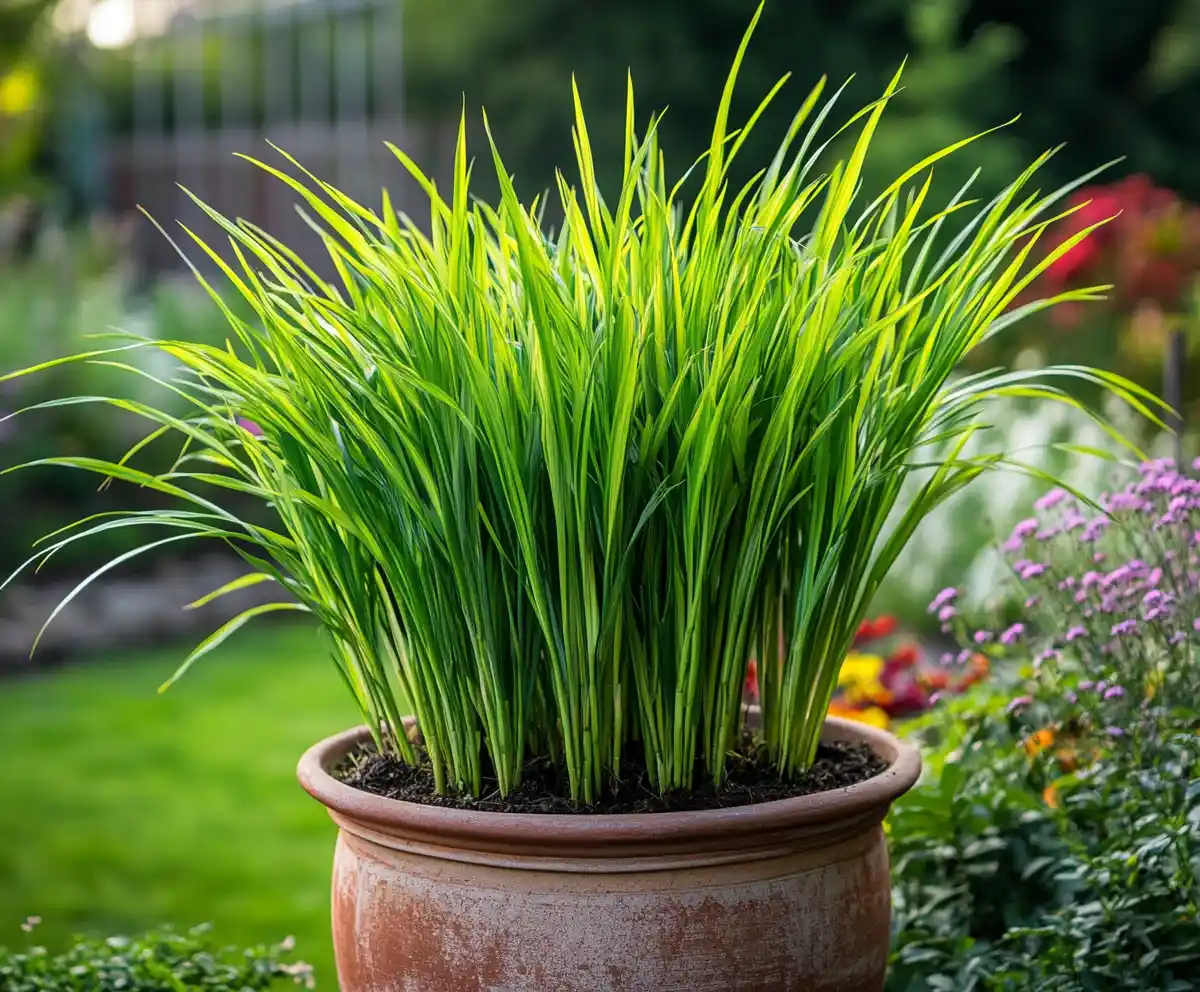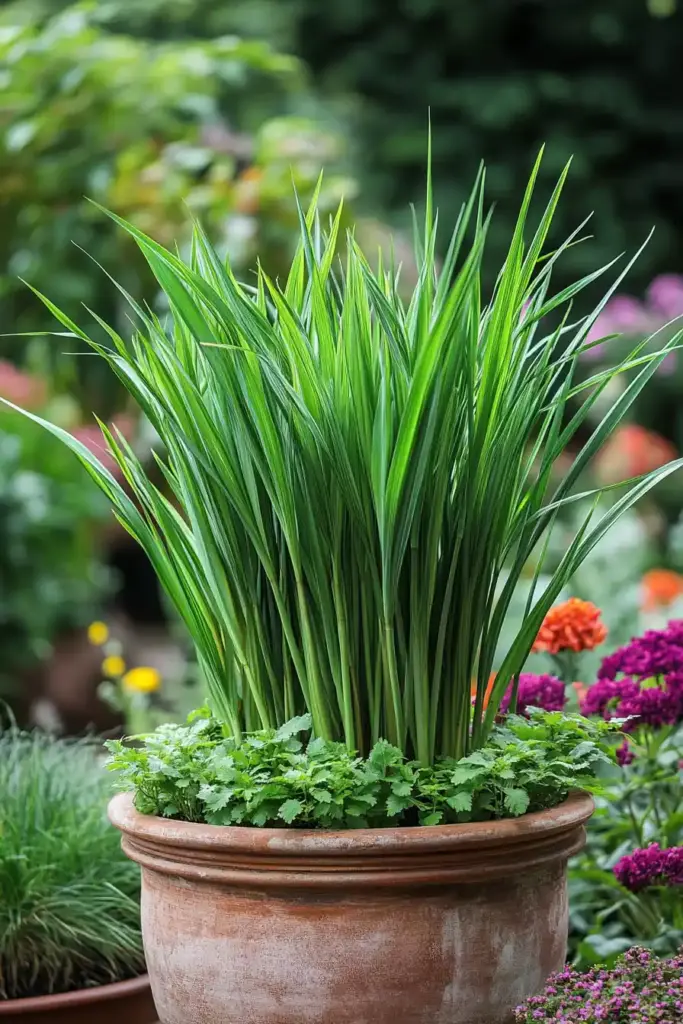If you love Thai cuisine or simply enjoy experimenting with aromatic herbs, learning about growing lemongrass is a rewarding adventure. This vibrant, lemony-scented plant is not only a staple in Southeast Asian kitchens but also surprisingly easy to cultivate at home. Whether you have a sprawling backyard or a cozy patio, you can enjoy fresh lemongrass with minimal effort and plenty of payoff.
Is Lemongrass Hard to Grow?
Good news for beginner gardeners: growing lemongrass is incredibly simple, especially if you live in a warm climate. In regions like Georgia, success often comes down to just three basics:
- Find a sunny spot in your garden.
- Dig a hole and plant your lemongrass seedling.
- Water regularly during dry spells.
That’s it! With very little maintenance, lemongrass will steadily thrive, growing tall and lush with minimal intervention. Even if your thumb is more “brown” than green, lemongrass is one of those forgiving plants that rewards even a little bit of attention with abundant growth.
Can Lemongrass Survive Winter?
While growing lemongrass is easy during the warmer months, winter poses a bigger challenge—especially in regions where temperatures dip below freezing. Lemongrass is a tropical plant at heart, and prolonged exposure to frost can severely damage or kill it.
Here’s what you need to know:
- Mild Winters: In places like Florida or southern Georgia, lemongrass can survive outdoors year-round, regrowing each spring with ease.
- Harsh Winters: In colder climates, it’s best to treat lemongrass as an annual or bring it indoors in a container before the first frost hits.
- Protecting Plants: Mulching around the base can offer some insulation, but it won’t guarantee survival in truly cold snaps.
If your region experiences unexpected freezes, you might need to replant each spring—but with how fast and easy lemongrass grows, it’s hardly a hassle.
How to Grow Lemongrass
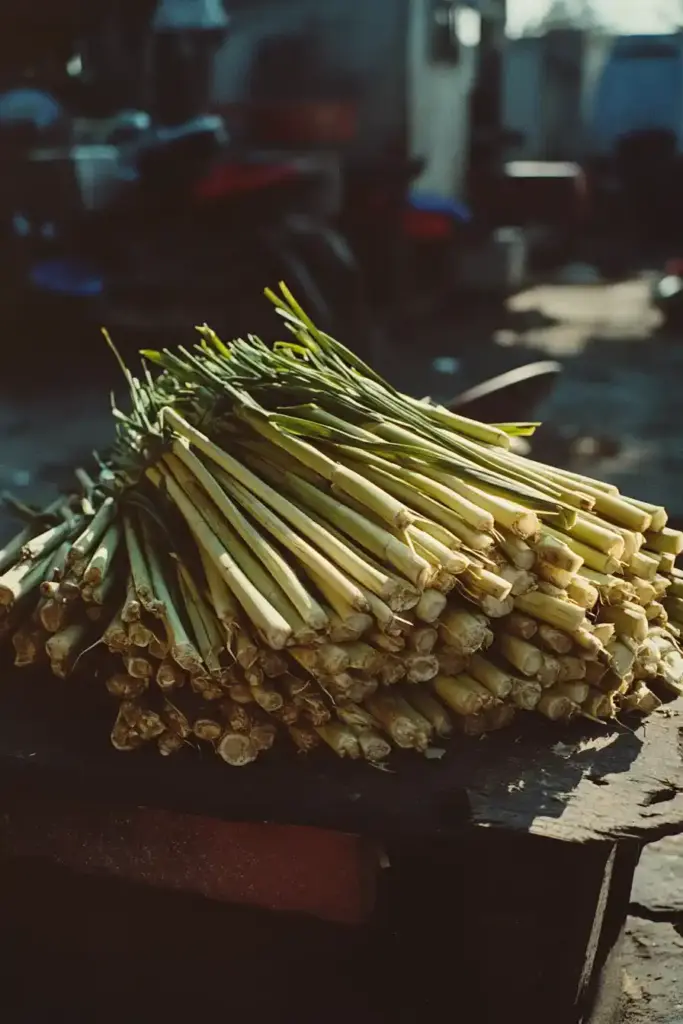
Starting your journey with growing lemongrass can be as simple as picking up a young plant from your local nursery. Look for healthy, green stalks and ask about different varieties—some are better suited for culinary use, while others are prized for essential oil production.
If you prefer a DIY approach, you can also sprout lemongrass from grocery store stalks. Here’s how:
- Choose Fresh Stalks: Pick firm, fresh lemongrass stalks that still have roots attached.
- Root Them in Water: Place the stalks in a glass of water near a sunny window.
- Watch Them Grow: After a few weeks, you’ll notice new roots forming.
Once the stalks have a strong root system, they’re ready for planting either in your garden beds or in containers.
How to Sprout Lemongrass Stalks
If you’ve found fresh lemongrass at the market and want to try growing lemongrass yourself, sprouting is a simple and rewarding method. Here’s a step-by-step guide:
- Select Good Stalks: Choose stalks that are firm, green, and still have some root base visible.
- Set Up a Water Bath: Place the stalks upright in a glass of water. Position the glass in a sunny window where it will get plenty of light.
- Change Water Regularly: Refresh the water every few days to prevent bacteria from building up.
- Wait for Roots: After about 2–3 weeks, you’ll see new roots forming.
- Plant in Soil: Once roots are a few inches long, transfer the stalks into damp, rich potting soil. Plant them with the root base about one inch below the soil surface.
Patience is key—within a few months, you’ll have a strong, flourishing lemongrass plant either inside or outside!
Best Conditions for Growing Lemongrass
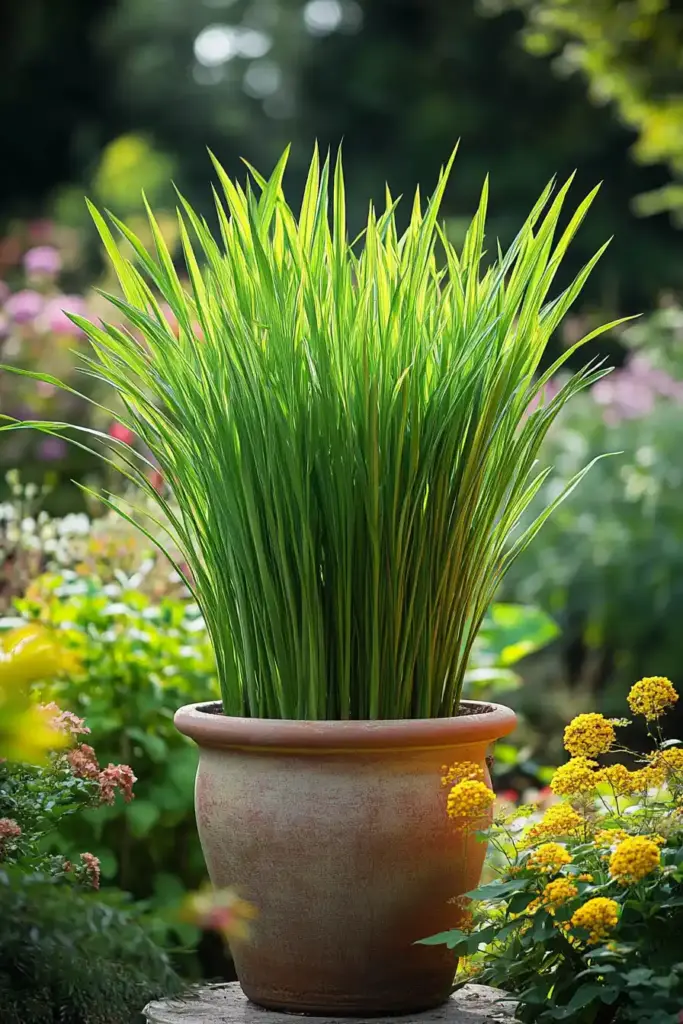
For the healthiest and most flavorful plants, it’s important to create the ideal environment when growing lemongrass. Here’s what this tropical herb loves:
- Full Sun: Choose a spot that gets at least 6–8 hours of direct sunlight daily.
- Rich, Well-Draining Soil: Lemongrass thrives in fertile, organic soil that drains well to prevent root rot.
- Plenty of Water: While it likes moisture, lemongrass doesn’t tolerate soggy conditions. Water regularly, especially during dry periods, but let the top inch of soil dry out between waterings.
- Space to Grow: Whether you plant it in the ground or in containers, lemongrass needs space to spread. Plants can reach several feet in height and width.
Patience pays off! It typically takes a few months for lemongrass to mature enough for harvesting, but once it does, you’ll have a steady supply for cooking and natural remedies.
How to Harvest Lemongrass
Once your plant is thriving, harvesting becomes one of the most satisfying parts of growing lemongrass. Here’s how to do it properly:
- Choose the Right Time: Wait until the stalks are thick and at least half an inch wide near the base.
- Pull After Rain: It’s easiest to harvest when the ground is damp. After a good rain or watering, grasp a stalk low to the ground and gently pull.
- Trim and Clean: Once you’ve harvested, peel away the tough outer layers to reveal the tender, aromatic white core inside—the part most often used for cooking.
- Store Carefully: Fresh stalks can be refrigerated for up to two weeks or frozen for longer storage.
Remember, regular harvesting encourages new growth, so don’t be afraid to snip what you need!
Lemongrass Plant Uses
One of the biggest rewards of growing lemongrass is its incredible versatility. Beyond its delightful lemony aroma, lemongrass has a wide range of uses:
Culinary Uses
- Flavorful Ingredient: Bruised lemongrass stalks add a citrusy punch to soups, curries, and broths.
- Tea Time: Dry or fresh grassy tops make a soothing herbal tea, either hot or iced.
Herbal and Wellness Uses
- Steam Facials: Create a natural facial steam by placing bruised stalks in a bowl of hot water. Inhale the fragrant steam to open pores and refresh your skin.
- Home Remedies: Traditionally, lemongrass has been used for digestive issues, coughs, fever, and high blood pressure. (For medical advice, always consult trusted sources like WebMD or your healthcare provider.)
Whether you’re cooking, crafting homemade beauty treatments, or exploring natural remedies, fresh lemongrass is a wonderful addition to your household.
Fresh Lemongrass Recipes
When it comes to growing lemongrass, the real joy comes from using your harvest in the kitchen! Here are a couple of simple, delicious ways to enjoy fresh lemongrass:
Spicy Lemongrass Soup
Add chopped lemongrass stalks to your favorite soup base for a fragrant, spicy kick. It pairs especially well with chicken, shrimp, or tofu in a light broth seasoned with ginger, garlic, and a splash of lime juice.
Homemade Lemongrass Tea
Making lemongrass tea is wonderfully easy:
- Boil Water: Bring a pot of water to a rolling boil.
- Simmer Stalks: Add fresh lemongrass stalks and reduce the heat to simmer for about 10 minutes.
- Strain and Serve: Remove the stalks and pour the tea into your favorite mug.
- Enjoy Hot or Iced: Sip it warm for relaxation, or chill it in the fridge and pour over ice for a refreshing summer drink.
Frequently Asked Questions About Growing Lemongrass
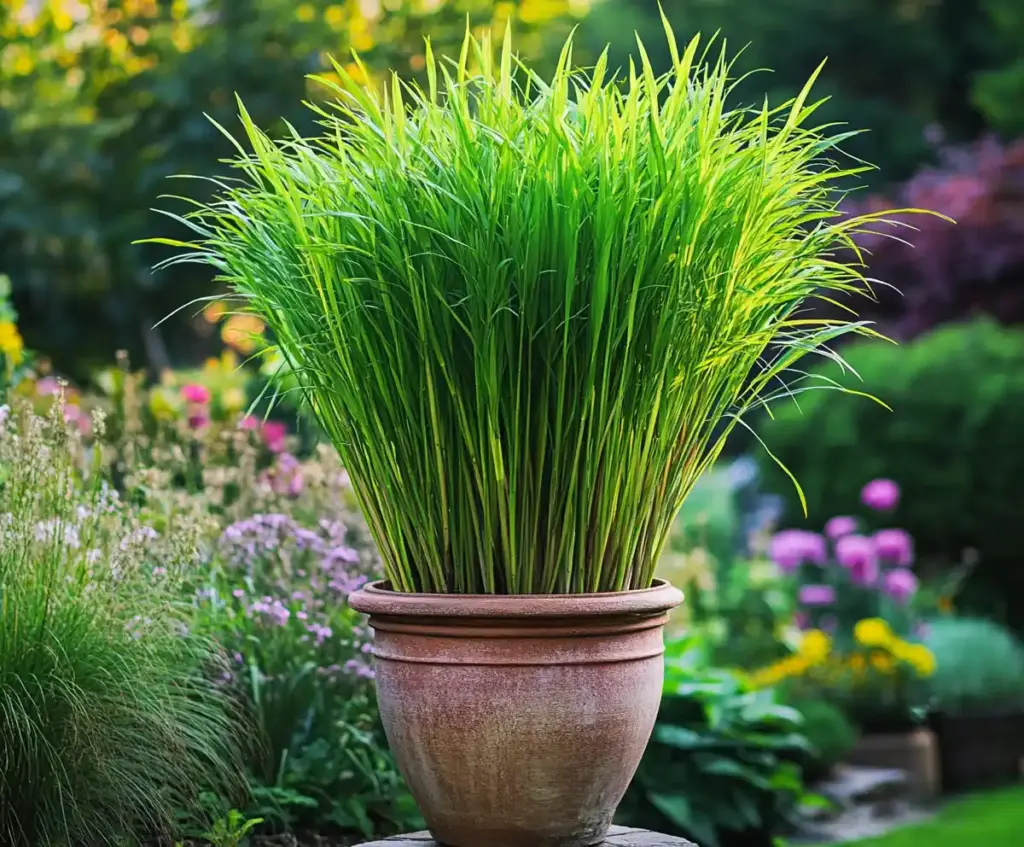
How long does it take to grow lemongrass?
Typically, lemongrass takes about 3 to 4 months to grow into a mature plant ready for harvesting. Patience during the early stages ensures a stronger, more flavorful harvest later on.
Can I grow lemongrass indoors?
Yes! Growing lemongrass indoors is very doable, especially if you have a sunny windowsill. Just ensure the plant receives at least 6 hours of direct sunlight daily and is planted in well-draining soil.
Does lemongrass come back every year?
In warm climates (USDA zones 9 and above), lemongrass can survive outdoors year-round and regrow each spring. In colder regions, it’s best treated as an annual or overwintered indoors.
How often should I water lemongrass?
Lemongrass enjoys consistent moisture, especially during hot, dry weather. Water when the top inch of soil feels dry, but avoid letting the roots sit in soggy soil to prevent rot.
What part of lemongrass is edible?
The tender white base of the stalk is the most commonly used part in cooking. Peel away the tough outer layers and finely slice or bruise the soft interior for the best flavor.
Conclusion
Growing lemongrass at home is a simple, rewarding project that offers big returns—whether you’re looking to enhance your cooking, create soothing herbal remedies, or just enjoy the beauty of this lush, fragrant plant. With a sunny spot, some regular watering, and a little patience, you’ll soon have a thriving lemongrass garden that brings flavor and wellness right to your fingertips.
If you’re excited about expanding your garden even further, you might also enjoy exploring easy-to-grow herbs like thyme, mint, or basil, which pair beautifully with lemongrass in a variety of recipes and DIY projects.

